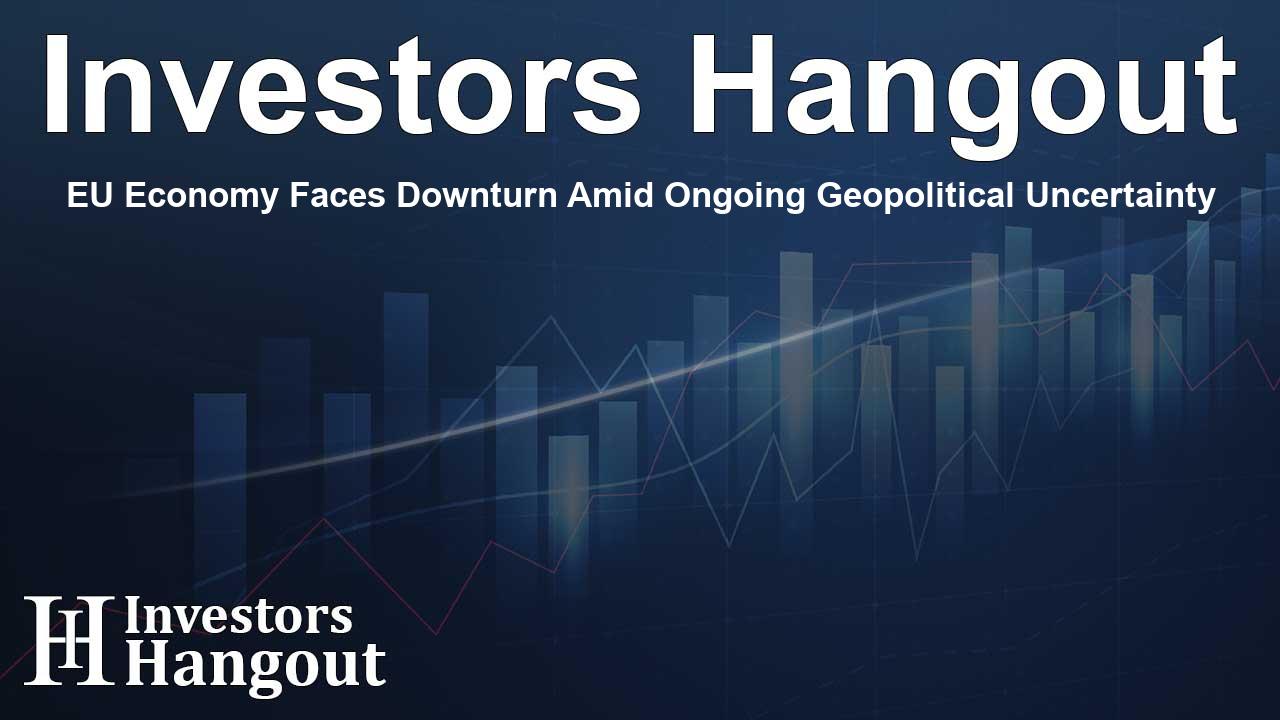EU Economy Faces Downturn Amid Ongoing Geopolitical Uncertainty

Geopolitical Turmoil Impacts EU Growth Forecasts
The European Commission (EC) has recently revised its growth expectations for the European Union (EU) due to heightened geopolitical tensions stemming from conflicts in Ukraine and the Middle East. The revised growth forecast for the EU's gross domestic product (GDP) stands at only 0.8% for the current year, significantly reduced from earlier estimates made in May, which anticipated a growth of 1.0%. Looking ahead, growth projections for 2025 have been scaled back from 1.6% to a mere 1.5%.
Uncertainties Surrounding Consumer Confidence
With global events impacting economic stability, consumer confidence in the Euro Area has taken a hit. As of November, the confidence level dropped by 1.2 points to a reading of -13.7, dipping below its historical average and failing to meet market expectations that anticipated a milder downtrend to -12.4. The dip in confidence is largely attributed to the ongoing cost of living crisis, compelling consumers to save rather than spend.
Household Savings on the Rise
The saving rate in Europe reflects the cautious behavior of consumers, now at 15.7%, indicative of a trend where households are preserving a greater portion of their incomes amidst economic uncertainties. Meanwhile, business profit shares have fallen to 38.8%, emphasizing the potential risks facing the economy's recovery.
Germany's Economic Contraction: A Significant Concern
Germany, the largest economy in the eurozone, has been identified as a considerable burden on the region's overall economic health, with the EC predicting a contraction of 0.1% in 2024. This marks the second consecutive year of negative growth, challenging the country's economic stability. Despite these setbacks, projections for recovery suggest a modest growth of 0.7% in 2025.
Trade Conflicts and Their Implications
Rising trade tensions, particularly with regard to potential protectionist policies from influential global players, put additional pressure on the EU’s economies. The anticipated tariffs, should they come to fruition, could significantly hamper nations with robust trade ties to the U.S., such as Germany and the Netherlands.
Exploring Economic Opportunities Amidst Challenges
Despite the troubling forecasts, there exist sectors within the EU economy that show promise for growth. Analysts highlight that European industrials present robust profitability and earnings growth prospects, particularly compared to technology sectors in the U.S. There is a potential for institutional investors to capitalize on opportunities in the industrial sphere, which offers a more steady growth avenue amidst broader economic uncertainties.
Necessity for Increased Public Investment
The International Monetary Fund (IMF) has underscored the importance of enhancing public investment to narrow the existing growth chasm between the EU and its counterparts. By raising public investment levels, the EU could potentially boost its GDP projections, providing a pathway towards greater economic resilience.
Global Economic Context: Diverging Paths
As the EU navigates through this challenging landscape, it's important to recognize that the U.S. economy continues to flourish, bolstered by strong consumer spending and investment. The IMF foresees the U.S. growth rate outpacing the EU's, setting the stage for a widening economic divergence that could complicate Europe's recovery efforts.
In conclusion, with Germany’s economic troubles and broader geopolitical risks significantly weighing down growth forecasts, the EU must adopt strategic measures to enhance consumer confidence and public investment. The road ahead is undoubtedly fraught with challenges, but by acknowledging these realities and seizing available opportunities, the EU can strive for a more robust economic future.
Frequently Asked Questions
What led to the downward revision of the EU GDP forecast?
The downward revision of the EU GDP forecast was primarily influenced by geopolitical risks related to the ongoing conflicts in Ukraine and the Middle East, which have adversely affected economic stability.
How is consumer confidence currently affecting the EU economy?
Consumer confidence has declined in the Euro Area, leading to increased savings rates as households prioritize saving over spending due to the high cost of living and economic uncertainty.
What is Germany’s predicted economic performance in 2024?
Germany is forecasted to experience a contraction of 0.1% in 2024, marking the second year of negative growth for the country, which is a significant contributor to the eurozone's economic challenges.
Are there any sectors in the EU that show growth potential?
Yes, analysts highlight that the European industrial sector offers strong profitability and potential growth opportunities, even amidst broader economic concerns.
What role does public investment play in the EU’s economic outlook?
Increasing public investment is viewed as crucial for improving the EU's economic prospects, as it could significantly boost GDP and help narrow the growth gap with the U.S.
About Investors Hangout
Investors Hangout is a leading online stock forum for financial discussion and learning, offering a wide range of free tools and resources. It draws in traders of all levels, who exchange market knowledge, investigate trading tactics, and keep an eye on industry developments in real time. Featuring financial articles, stock message boards, quotes, charts, company profiles, and live news updates. Through cooperative learning and a wealth of informational resources, it helps users from novices creating their first portfolios to experts honing their techniques. Join Investors Hangout today: https://investorshangout.com/
Disclaimer: The content of this article is solely for general informational purposes only; it does not represent legal, financial, or investment advice. Investors Hangout does not offer financial advice; the author is not a licensed financial advisor. Consult a qualified advisor before making any financial or investment decisions based on this article. The author's interpretation of publicly available data shapes the opinions presented here; as a result, they should not be taken as advice to purchase, sell, or hold any securities mentioned or any other investments. The author does not guarantee the accuracy, completeness, or timeliness of any material, providing it "as is." Information and market conditions may change; past performance is not indicative of future outcomes. If any of the material offered here is inaccurate, please contact us for corrections.